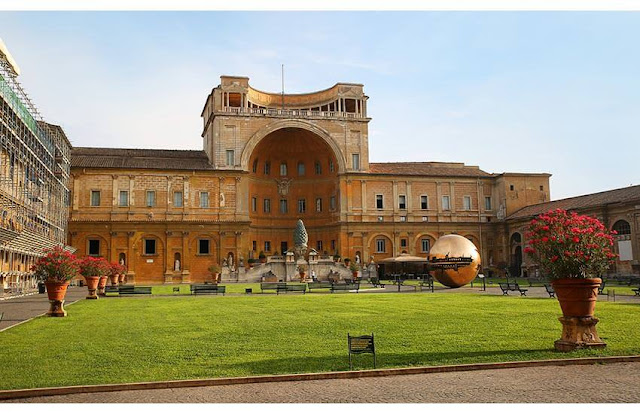Sistine Chapel, papal chapel in the Vatican Palace that was built between 1473 - 1481 by the architect Giovanni dei Dolci for Pope Sixtus IV (hence its name).
The Sistine Chapel is one of the favorite tourist attractions to visit in Vatican City. It is highly decorated from floor to ceiling by some of the most famous names in Renaissance painting and particularly the ceiling frescoes by Michelangelo.
General Information
Entry to the Sistine Chapel is permitted only to those visitors who dressed appropriately. Low cut or sleeveless clothing, miniskirts, shorts and hats are not permitted.
Do not bring luggage, camera, sticks and umbrella into the museums. Use cloakrooms and leave your luggage, suitcase and other things there.
You are not allowed to consume food and drinks inside the museum.
Timing
09:00 AM - 06:00 PM from Monday to Saturday
09:00 AM - 02:00 PM last Sunday of every month
Sistine Chapel closed on Sunday (except the last Sunday of each month), 1 Jan, 6 Jan, 19 Mar, 2 Apr, 1 May, 29 Jun, 14 Aug, 15 Aug, 1 Nov, 8 Dec, 25 Dec and 26 Dec.
Entrance
You need to purchase a ticket for entering into Sistine Chapel.
Tickets
Tickets for Sistine Chapel is included with Vatican Museums. Ticket lines can be a very long, so we advise you to book tickets for Sistine Chapel in advance especially during season time. You can book tickets from the ticket office or simply from online websites.
Three types of tickets are available
Regular or Full Tickets: For Non-European citizens above 18 and European Citizens above 25 years of age.
Reduced or Half Tickets: Available for citizens of the European Union between 18 and 25 years of age and public school teachers
Free tickets: Available for citizens of European Union under 18 and for Italian Public Institute Teachers.
Tours
Book a Tour Guide for all museums in Vatican including Sistine Chapel and explore every part of museum.
What to see inside Sistine Chapels?
Ceiling
The ceiling is split into 9 central panels, which depict The Expulsion of Adam and Eve, The Creation of the World, and The Story of Noah. From all 9 panels most famous is The Creation of Adam, which portrays the finger of God touching the fingertip of Adam in order to bring him to life
The Last Judgment Altar Fresco
Giant fresco above the Sistine Chapel altar was painted in 1535, it represents some horrifying scenes from The Last Judgment and it also represents the second coming of Christ.
The North Wall of the Sistine Chapel
It contains scenes from the life of Jesus Christ. Beginning from the altar the panels and artists represented here are from left to right:
The Baptism of Jesus by Pietro Perugino
The Temptation of Jesus by Sandro Botticelli
The Calling of the First Disciples by Domenico Ghirlandaio
The Sermon on the Mount by Rosselli
The Handing of the Keys to Saint Peter by Perugino (a very noteworthy work among the wall frescoes)
The Last Supper by Cosimo Rosselli
The South Wall of the Sistine Chapel
The south or left wall of Sistine Chapel display scenes from the life of Moses. Starting from the altar, the panels and artists represented on the south wall are from right to left:
Moses' Journey Through Egypt by Pietro Perugino
Scenes from the Life of Moses Before His Journey Through Egypt by Sandro Botticelli
Crossing the Red Sea by Cosimo Rosselli and d'Antonio
The Ten Commandments by Cosimo Rosselli
The Punishment of Dathan, Korah and Abiram by Sandro Botticelli
Moses' Final Acts and Death by Luca Signorelli

Comments
Post a Comment